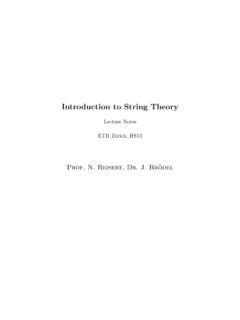Transcription of Essential Music Theory for Guitarists ChainsawGuitarTuition
1 Essential Music Theory for Guitarists Music Theory for Guitarists of ContentsWhat is " Music Theory "?..3 The Musical Music does it help?..4 How to read Guitar Tab for to Read Guitar Major the Major to make a the Major a Major up the !..13 The Notes of Notes of a Major for Guitar?..16 Understanding Key a Key Signature and are Inversions?..20 Inverting Guitar Chord Key your own I - IV - V ii - V - iv - V - your own Chord Music Theory for Guitarists is " Music Theory "?When people hear the word " Theory ", they automatically assume its like something you would learn in a class at school. Its true that Music is taught this way sometimes, but that's not the whole story!So, to start with what is " Music Theory "? The Musical See-SawJust because something is " Theory ", doesn't mean it has to be boring and taught by aging professors with grey hair and glasses!
2 The " Theory " of something is just the explanation of how and why it works, right? Imagine you had a see-saw, you sit on one end, and your friend sits on the other. Now, if you jump up, pulling the see-saw with you, your friend will go downwards. When your friend gets to the ground they'll jump up and you'll come 'm sure you're familiar with the situation! What I've just described is the "practical" side of things. I could also describe it to you as "see-saw Theory ". For example: the see-saw is balanced over a point directly in the middle of both of you. When you jump up, you're taking your weight off of the end you're sitting on. This causes your end to rise, and the other to fall across the pivot point ( the stand in the middle). When your weight is re-applied, and their weight is removed (they jump up), the reverse happens and you come you've ever used a see-saw before, you would already know all of this.
3 In fact, you're probably perfectly capable of describing the "see-saw Theory " in your own words, and you probably could have done as a kid as well. Did knowing how a see-saw works mean you enjoyed it any less? No? Actually, you might have enjoyed it even more (because you knew better how to control it and use it).The Music TheoryWell, guess what? The same thing applies to Music Theory ! No, I'm not talking about physics and weights this time, but sounds instead. Music Theory is what we use to describe how Music works, just like with the see-saw example, and just as with the see-saw, knowing how it works will not spoil how much you enjoy it. Music Theory does not destroy your creativity anymore than understanding how the see-saw works destroys a child's ability to ride it!With Music Theory , we're more concerned with things like "Which chords go together, and why?", or "Which scales go with which chords?
4 ". If you think about it, the only alternative would be: these are noises, you can make them with a guitar or a bass. that was how Music worked, this would be a very small website indeed! Music Theory for Guitarists does it help?How does Music Theory help you? Well, just the same way that knowing how to construct a sentence or form words helps you to talk to people. Otherwise you're kinda stuck with random grunts. Sure, every now and then you may grunt something intelligible, just like if you didn't understand any Music Theory you can still compose good Music ! You don't have to understand everything about Music Theory , either. Just enough to do what you do, or just as much as you're interested in using. For example, you wouldn't learn Greek if you had no Greek friends or relatives, and you had no interest in the language. What would be the point? Just stick to English (or whichever is your first language).
5 Same goes for Music Theory , there's no need to learn the modes of the melodic minor if you don't like the sound of the scale and don't play jazz. Just at least learn the pentatonic scale, and maybe the major , my advice is: don't be afraid of " Music Theory ". It can only help you out! Music Theory for Guitarists to read Guitar TabTablature, or "tab", is a system of musical notation that focuses on where you place your fingers, rather than the actual musical pitches. You've probably heard of "guitar tab" on the interwebs, but "tab" is not something specific to the guitar (tabs also exist for banjo, harmonica, lute, harp, even piano), nor is tab a recent invention!Guitar Tab for BeginnersGuitar tab is generally very similar to the above, with vertical lines representing the strings, and numbers telling us which fret to play on that string . Because tab doesn't show you the pitches, but where to put your fingers, the tuning of each string is normally written just before it (reading from left to right).
6 Here is an example of some guitar tab:e --------------B --------------G --------------D -----5------5-A -----3------3-E -0-0---0-0----As you can see, there are six vertical lines, each one represents a guitar string . They are labelled according to their tuning (with the capital "E" being the thickest string , and the small "e" being the thinnest). If you're unsure about standard guitar tuning, please refer to my post on how to tune your to Read Guitar TabEach number represents a fret (which are numbered from the head of the guitar up to the body), and the line that the number is on tells you which string to play. For example, in the above guitar tab the first note you play is the open low (thickest) E string (reading from left to right), twice. You can tell it's the thickest string because it's on the lowest line, and you can tell that it's an open string ( no fingers on it) because it's an "0". Next, the tab is telling you to play the 3rd fret on the A string , and the 5th fret on the D string together (together because they are stacked).
7 Music Theory for Guitarists MistakesRemember that you read the tab from left to right, and ALL strings at the same time. So if you have something like this:e -0-2-3--2-0-----B ------------4---G ----------------D ----------------A --------0---2---E would start by playing the open "high e" (thinnest string ) and the third fret on the "low E" (thickest string ) at the same , notice that the lowest line in the tab represents the thickest string on the guitar. This may seem backwards at first, and you should be wary of playing the whole tab upside-down! Just remember that it's as if the tab was the right way up on your lap. The nearest string to you on the tab (the bottom one) would be the nearest string when you hold the guitar (the thickest one).Guitar Prothe program that I recommend for reading and writing guitar (and bass) tab is Guitar Pro. If you want something better than the text based tab I've used in this post, then you really must have a dedicated program to display , we're going to go a little more in-depth and look at some of the other symbols you'll find on a tab (most of these symbols refer to the tabs you'll find on the Internet).
8 Picking DirectionThe direction you pick is usually represented by the letter "D" for down (towards the ground), and "U" for up (towards the sky), but is often left off altogether. Music Theory for Guitarists are normally written either with "/" (for a slide up in pitch) and "\" (for a slide down). For example:e ---------------------B ---------------------G -----5---------------D -5/7---7\5-----------A ---------------------E ---------------------Here, you would play the 5th fret on the D string , slide up to the 7th fret then play the 5th fret on the G string . Next, pick the 7th fret on the D string and slide the note down to the 5th fret (only picking the string once for each slide!).StringbendsThese are when you bend a note up or down to change it's pitch. Usually notated with "b". So, for example "5b(7)" would mean you play the 5th fret, and then bend the string so that it sounds the same as the pitch of the 7th fret.
9 The 7 is in brackets because you don't re-pick the variations include: (7)b5 which would be the reverse of the above example. Bend the 5th fret up to the pitch of the 7th BEFORE playing it, then pick it and return it to it's normal pitch. Sometimes also written as "pb" for "pre-bend", "r" for "release" (as in "(7)r5"), or "bd" for "bend down".5b(7)--(7) which means you need to play the 5th fret, bend it up to the 7th fret, hold it, then re-pick the 7th fret. Sometimes this is written with "rp" for "re-pick".You may also see "5b1/4" which means to bend the pitch up by half a fret (used a lot in blues) creating a quarter-tone bend (as each fret is a semitone).VibratoVibrato is when you "wobble" the note, usually by bending it up and down continuously by a small amount (not usually as much as a whole fret). Usually notated in tab by "~", it comes it three main forms: standard (just "~" over a note); "wide", and with the whammy bar (written with "~" and "w/bar").
10 Tremolo PickingSomething that confuses a lot of people is that "Tremolo" is not technically a technique in itself, but a musical effect- the effect of playing one note multiple times, very rapidly, for a "shimmering" Music Theory for Guitarists In electric guitar circles, you'll hear it referred to as "tremolo picking" because the notes are usually alternate picked (down and up picking), but tremolo can be done on any that are tremolo picked would be notated with "tp" above (for "tremolo picking").LegatoLegato, or hammer-on's and pull-off's, is written with either "h" for "hammer", "p" for "pull off" or "T" for right hand tapping. For example:e ---------------B ---------------G ---------------D -5h7t10p7p5----A ---------------E ---------------May just look like a bit of a mess, but let's decode it! Here you play the 5th fret on the D string then hammer a finger from your right hand onto the 7th fret (to sound it without picking it).


